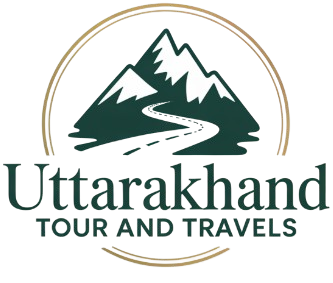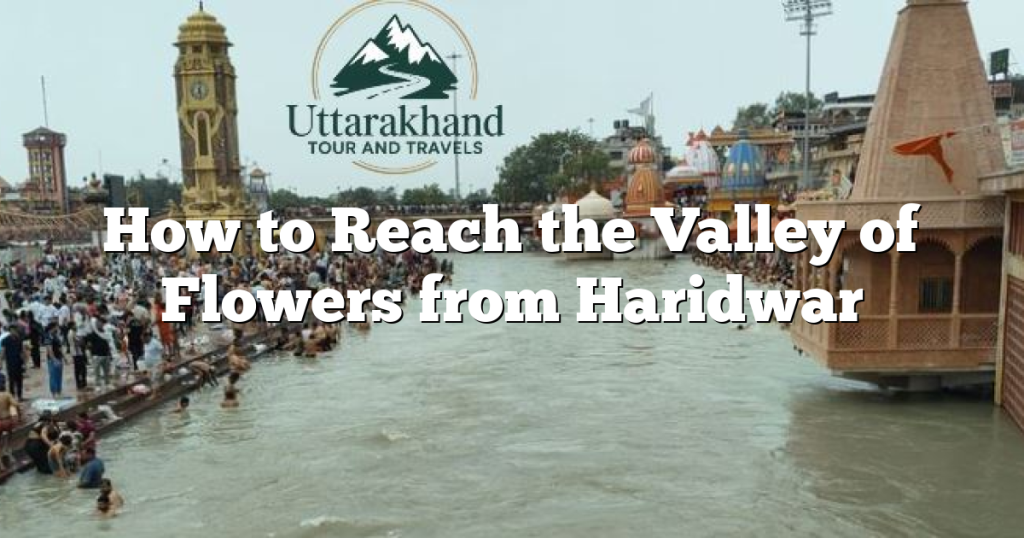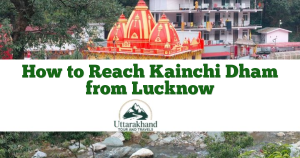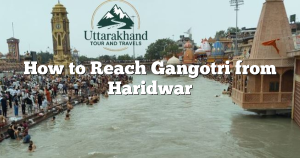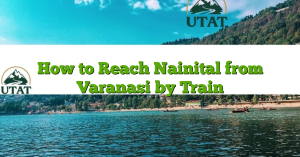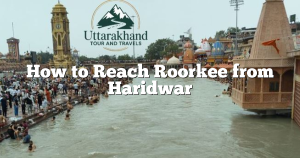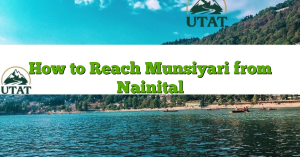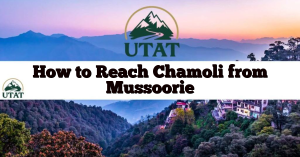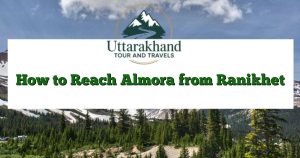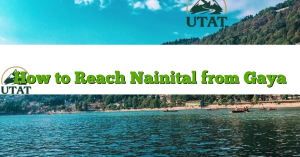The Valley of Flowers National Park, a UNESCO World Heritage Site, is a breathtaking alpine meadow nestled high in the Himalayas of Uttarakhand. Famous for its vibrant carpet of endemic alpine flowers, it’s a dream destination for trekkers and nature lovers. However, reaching the Valley of Flowers is not a straightforward journey; it involves a multi-stage process of road travel followed by a significant trek.
The Valley of Flowers is typically open from June 1st to October 31st each year, with the peak blooming season usually from July to September, after the monsoon arrives.
The Journey to the Valley of Flowers: A Multi-Stage Expedition
There are no direct trains or roads right up to the Valley of Flowers. Your journey from Haridwar will involve a combination of road travel to a base village, followed by a trek. The key stages are:
- Haridwar to Govindghat (By Road): This is the first and longest leg of your journey.
- Govindghat to Ghangaria (Trek/Mule/Helicopter): Ghangaria is the base camp for both the Valley of Flowers and Hemkund Sahib.
- Ghangaria to Valley of Flowers (Trek Only): The final, beautiful stretch.
How to Reach the Valley of Flowers from Haridwar
Here’s a detailed breakdown of the journey:
Stage 1: Haridwar to Govindghat (By Road)
Govindghat is the last motorable point on the route to the Valley of Flowers. It’s a long but scenic drive through the Garhwal Himalayas.
- Distance: Approximately 290-300 kilometers.
- Journey Time: This road journey typically takes 9 to 11 hours, depending on road conditions, traffic, and the number of stops. It’s often recommended to start very early in the morning from Haridwar.
- Route: The most common route follows NH 58: Haridwar – Rishikesh – Devprayag – Srinagar – Rudraprayag – Karnaprayag – Joshimath – Govindghat. The roads are generally well-maintained national highways, but mountain roads can be challenging, especially during the monsoon season when landslides can occur.
a. By Taxi/Cab (Most Comfortable and Convenient)
Hiring a private taxi is the most popular and comfortable option for this long mountainous drive.
- Pros: Door-to-door service, flexibility to stop for meals or views, and privacy. You can share the cost if traveling in a group.
- Cons: Most expensive option.
- Price Estimates: A one-way private taxi (sedan) can cost approximately ₹6,000 to ₹9,000, and an SUV might cost ₹8,000 to ₹12,000, depending on the car type and service provider. It’s advisable to confirm if tolls and driver allowances are included.
- Tips: Book your taxi well in advance, especially during the Valley of Flowers season. Start your journey from Haridwar very early (e.g., 5-6 AM) to avoid traffic and reach Govindghat before nightfall.
b. By Bus (Economical)
State-run buses (Uttarakhand Transport Corporation – UTC) operate services towards Joshimath, which pass through Govindghat.
- Journey Time: Buses will take longer, typically 10 to 12 hours or more, due to multiple stops and mountain driving.
- Operators: Look for UTC buses heading to Joshimath or Badrinath from the Haridwar Bus Stand.
- Ticket Price Estimates: Bus fares are much more economical, usually ranging from ₹800 to ₹1,200 for a seat, depending on the bus type (non-AC/AC).
- Pros: Very budget-friendly.
- Cons: Long and can be tiring. Less comfortable than a private taxi. Fixed schedules and numerous stops.
- Tips: Inquire at the Haridwar Bus Stand a day prior or early morning for buses departing towards Joshimath/Badrinath that stop at Govindghat. Be prepared for a long journey.
Stage 2: Govindghat to Ghangaria (Trek Starts)
Govindghat is the actual starting point for the trek. While earlier the trek began directly from Govindghat, a new motorable road has been built up to Pulna Village, reducing the initial trekking distance.
- Road Segment: From Govindghat, you can take a local shared taxi or private jeep for about 4 kilometers to Pulna Village. This ride takes about 15-20 minutes.
- Trek Segment: From Pulna, a trek of approximately 9-10 kilometers leads to Ghangaria.
- Trek Time: This trek typically takes 5 to 7 hours, depending on your fitness level and pace. The path is well-defined and generally well-maintained.
- Options:
- On Foot: The most common way.
- Mules/Ponies: Available for hire from Pulna for those who prefer not to walk the entire distance. This is a popular option for pilgrims and those with less trekking experience.
- Porters/Dandis (Palanquins): Also available for hire for carrying luggage or people.
- Helicopter Service: A helicopter service often operates from Govindghat to Ghangaria, subject to weather conditions. This is the fastest but most expensive option. Fares are dynamic but can be around ₹3,000-₹4,000 one way.
- Accommodation: Ghangaria is the base camp village and offers various lodging options, from basic guesthouses and dharamshalas to tented accommodations. You must stay overnight in Ghangaria, as staying inside the Valley of Flowers is prohibited.
Stage 3: Ghangaria to Valley of Flowers (The Final Trek)
This is the most enchanting part of your journey, leading you directly into the floral wonderland.
- Trek Distance: Approximately 3.5 to 4 kilometers from Ghangaria to the entrance of the Valley of Flowers National Park.
- Trek Time: This relatively gentle trek takes about 1.5 to 2 hours one way to reach the main valley. Once inside, you can spend several hours exploring the meadows.
- Permits: You need to purchase an entry permit at the entrance gate of the Valley of Flowers National Park.
- Indian Nationals: Around ₹200-₹250 for 3 days.
- Foreign Nationals: Around ₹850-₹1000 for 3 days.
- Important Rules:
- No Mules/Ponies: Mules and ponies are not allowed inside the Valley of Flowers from Ghangaria. The final trek must be done on foot.
- Day Visit Only: You must leave the Valley of Flowers by 5:00 PM as overnight stay is strictly prohibited to preserve its delicate ecosystem. The last entry is typically by 12:00 PM.
- No Food Stalls: There are no food stalls inside the valley; carry your own water and snacks.
- Carry Back Waste: Strict rules apply to keep the valley clean; carry all your trash back.
Overall Trip Considerations
- Multi-Day Trip: The trip to the Valley of Flowers from Haridwar requires a minimum of 3-4 days:
- Day 1: Haridwar to Govindghat (road travel), then trek to Ghangaria.
- Day 2: Explore Valley of Flowers and return to Ghangaria.
- Day 3: (Optional) Trek to Hemkund Sahib (6 km one way, steeper trek) or descend to Govindghat.
- Day 4: Travel back from Govindghat to Haridwar.
- Best Time to Visit: Mid-July to mid-August is generally considered the best time to witness the Valley of Flowers in full bloom, though it coincides with the monsoon season, so be prepared for rain.
- Fitness Level: While not overly strenuous, the trek requires a moderate level of fitness. Acclimatization is important.
- Essentials: Pack sturdy waterproof trekking shoes, rain gear, warm layers, a first-aid kit, and sufficient water/snacks.
Reaching the Valley of Flowers from Haridwar is a memorable adventure that combines a long scenic drive with an enchanting trek into one of nature’s most spectacular displays. Planning each stage meticulously will ensure a smooth and rewarding experience.
